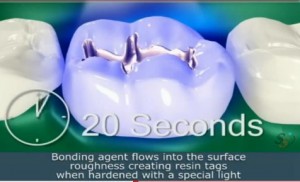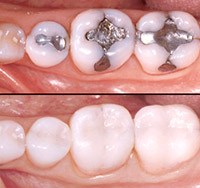Dental fillings are nothing but one of the procedures performed by dentist on affected teeth. Dental fillings are also referred to as dental restoration. Dental restoration may include several procedures such as filing cavities, replace fallen tooth etc. Such procedures are conducted only by certified dentist under complete medical settings. Before undergoing such dental procedures, a patient may have to make several visits to the dentist. These visits are essentials as the dentist may perform prior cleanup and other important prerequisites.
Steps of dental filling:
During the procedure of dental filling the dentist may first numb the dental region that should be treated. Then a suitable device will be adopted to eradicate the decayed area. After this the dentist will appropriately analyze whether all the decay is removed appropriately. If everything looks fine, the dentist may prepare the space by cleaning it, so that the cavity can be filled properly. During cleaning dentist ensures to remove bacteria and debris. Incase the cavity is near the root, the dentist may first put a layer of glass ionomer or other material to fill a layer at base of the cavity protecting nerves. After the filling procedure is completed, the dentist may polish the filled area.
There are other procedures that may be required in such dental restoration for example, tooth coloring etc. Then a light that helps in curing or hardening every layer is applied on the operated area. When the multi- layering procedure is done, your dental care provider will try to shape the filled material to get the desired results.
Materials available for dental procedures of filling cavity:
With the advancement of medical industry, there are several types of materials available for dental filling. Teeth can be filled using material such as gold, silver amalgamation, glass ionomer, plastic material, porcelain etc. However, composite resin fillings are mostly found these days. The type of filling that you require may depend on various factors such as, decay extent, insurance coverage of patients, expenses of filling material as well as recommendation of your dentist.
Advantages and disadvantages of Gold dental filling:
Gold dental filling last for 10 to 15 years or longer and does not wear away. It can withstand friction and forces of chewing. Gold is better looking than silver. However, gold is very expensive compared to other filling material. It requires more dental visits than usual. Gold filling cannot be done immediately near to silver amalgam filling as it may lead to galvanic shock due to interactions between the metals used in the material.
Nevertheless, before deciding on your own, the material for dental restoration, it is essential to seek dentist’s recommendation regarding what material will be suitable for your dental restoration.
Dental filling issues:
It should be known that dental restoration may also associate some issues. For example, tooth sensitivity, allergies of filling, deteriorating filling etc. Since tooth may be sensitive to sweet, force, temperature etc there are chances that you may experience pain after filling procedure. Such issues do not persist for a long time; however, if it lasts it is suggested to consult your dentist who performed the procedure of dental filling.
Dental Filling Costs
Dental filling costs may different according to country, county, dental office and type. Metal filing can range from $75 TO $150 per filling while cosmetic resin filing can cost $150 to $200.

